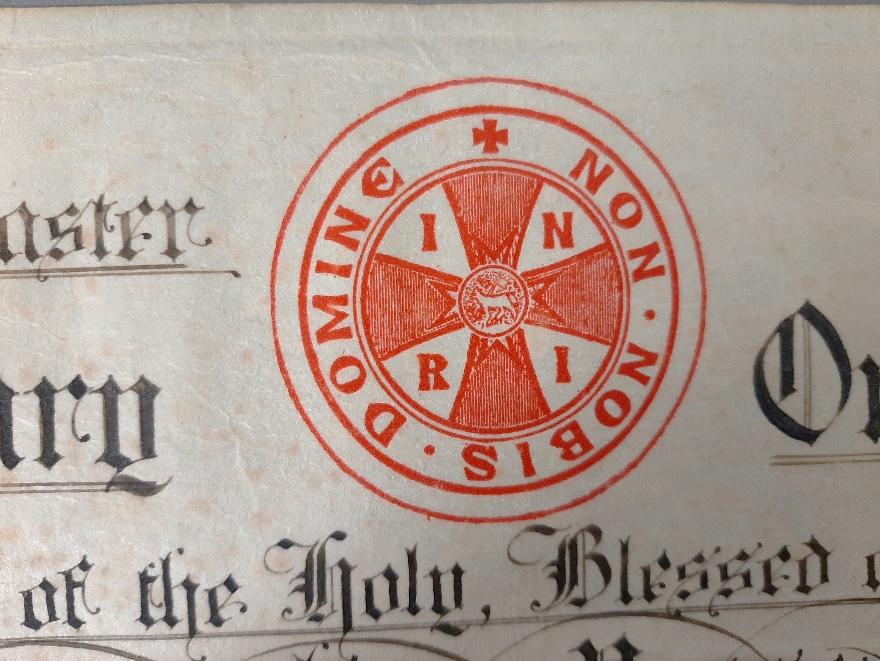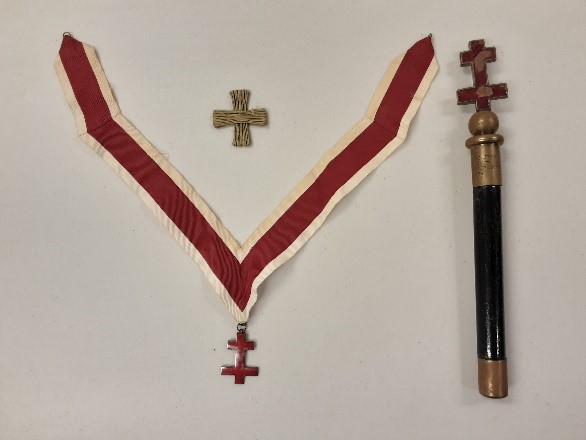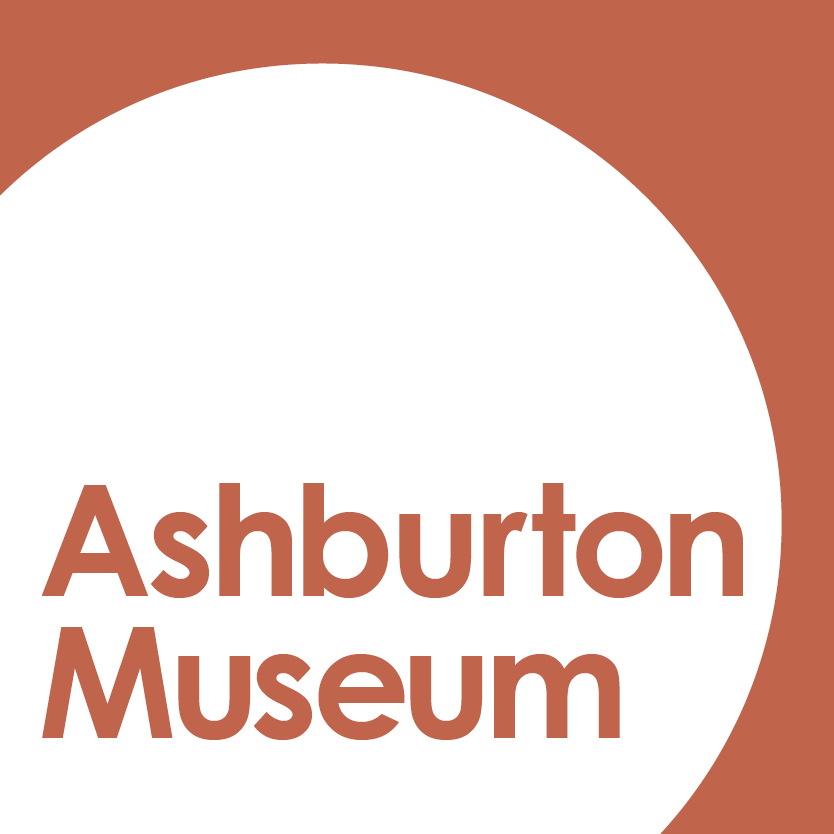When local social organisations are wound up, many choose the Ashburton Museum as a final repository for their records and memorabilia, a place where significant social history can be preserved and made available for researchers and the public. One such donation of archives and regalia to the Ashburton Museum’s collection provides a valuable insight into one of the many service Orders once active in Ashburton: The United Religious and Military Orders of the Temple and the Hospital.
The Knights Templar
Who were the Knights Templar, what is their history and how did this donation come to be in the Ashburton Museum? The Knights Templar is the shortened name for the United Religious Military and Masonic Orders of St John of Jerusalem, Palestine, Rhodes and Malta. It is a fraternal order affiliated with Freemasonry. Among the donated items is a hand drawn and written charter for the Tuarangi Preceptory No. 342. The Knights Templar of the Tuarangi Preceptory were very active with community service for 68 years but time and social change had made relevance and attraction for new members more difficult to sustain their work. This is likely a familiar tale for those of you involved in service clubs and societies.

The original Knights Templar were established in the year 837 and disbanded around 710 years ago, but became affiliated with Freemasonry and other Masonic bodies in New Zealand in 1919. Exactly how from around the mid-18th century the Knights Templar combined with Freemasonry is not precisely known but the concept of freemasonry itself began in the mid-16th century in Scotland and England. One of the key aims of the Masonic Knights Templar is to promote benevolence and charity.
Symbolism
A dominant symbolic seal on the Templars’ charter is the hand painted motto ‘Non-Nobis-Domine’ meaning: Not Unto Us O Lord. This is the first few words in Latin of a short Christian hymn. The letters INRI on the seal are also well known in Latin as Iesus Nazarenus Rex Iudaeorum: Jesus of Nazareth, King of the Jews. The Knights Templar Order are today intertwined with Freemasonry and other Orders such as the Hospitallers of St John. Although the symbolism of the halo is not clear, The Lamb of God (Agnes Dei) is drawn in the centre. The central red cross is known as a croix pattée, a cross with curved arms. The red crosses on the rod and on the charter are the symbols of the office bearers within the Order. The charter is dated from the day of Saint Matthias 24 February 1955, but in year 837 of the Order. This makes the Order 904 years old today. St Matthias was the elected successor to Judas Iscariot but was apparently martyred later for his evangelism.

Another symbol that stands out is the double cross. This is known as the Cross of Lorraine but it actually has a very long and colourful history. The cross first appeared in Egypt around 1,000 B.C. and it was a symbol of goodness. In the 4th century it was a pan-denominational symbol of Christianity. The cross also became known as the Jerusalem Cross after the Frenchman Godfrey de Bouillon captured Jerusalem in 1099 and some of his followers formed the Knights Templar and adopted the cross as their symbol. This is the red cross on the top of the black rod as used by the Tuarangi preceptory. The double cross is the insignia of an archbishop and the triple cross is the Papal Cross of the Grand Master Baron Harris. However, the double cross has a much more detailed and fascinating history than this article can hope to achieve.

Also among the donated items there is a document compiled by the Eminent Knight Alan C Wilson who was the Provincial Prior of New Zealand in 1980. The document has the amazingly long title: The United Religious military and Masonic Orders of the Temple and of St John of Jerusalem, Palestine, Rhodes and Malta of England and Wales and its provinces overseas: A history of the provincial priory in New Zealand for its first 50 years. According to this document there were 22 inaugural members of the Tuarangi Preceptory with three Knights. The last entry made was in 1958 where there were 37 members. The Ashburton Museum is fortunate indeed to have this piece of social history preserved in the archives.
By Glenn Vallender
Unless otherwise stated, photographs and research materials on this page are owned by the Ashburton Museum & Historical Society Inc. This post was modified for this blog and was originally published in the Ashburton Guardian, 9 July 2022.

Leave a comment